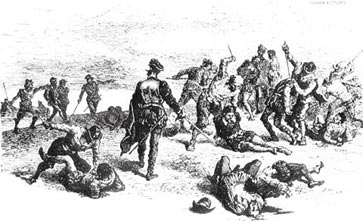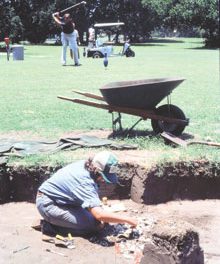Part 2: Why Hurricanes Avoid Us
 Our tourism plan for coastal South Carolina must focus on the fall . . . for two reasons. First, we now have new information. Our risk for fall hurricanes is “relatively low.” Even more important, we know that tourism drops off the map for Beaufort County in the fall. That is especially true for Hilton Head. In short, the fall of the year is our big opportunity. In fact, it is a billion dollar opportunity.
Our tourism plan for coastal South Carolina must focus on the fall . . . for two reasons. First, we now have new information. Our risk for fall hurricanes is “relatively low.” Even more important, we know that tourism drops off the map for Beaufort County in the fall. That is especially true for Hilton Head. In short, the fall of the year is our big opportunity. In fact, it is a billion dollar opportunity.
You might be asking yourself, “What do you mean when you say that our risk for fall hurricanes is “relatively low?” That is the term that four hurricane specialists at the National Hurricane Center gave me. It means this: Yes, it is possible for us to receive a direct strike from a hurricane, but the odds are low. For example; of the three major hurricane categories (categories 3,4,and 5), the National Hurricane Center projects that we should be hit by a category 3 hurricane every 79 years.* In other words, the risk is low.
To me it was never enough to just hear from a hurricane specialist that our hurricane risk was “relatively low.” I had to understand WHY it was considered low. Repeatedly, four different hurricane specialists gave me the answer below. You and I have a few friends and family members who have told us that they do not travel to South Carolina because of our fall hurricane threat. My suggestion is that you mail everyone on your contact list this explanation.
“There are real meteorological reasons why hurricanes tend to not hit South Carolina’s coast. When a hurricane moves west from the African coast, it can either enter the Gulf or bend north and follow our Atlantic coast. Most of them, however, go into the Gulf because hurricanes usually follow the warmer Gulf water. In late August we are further protected by the Canadian jet stream. At that time the jet stream begins to drop down into the United States. When it does it quickly touches the low pressure trough that is off of our coast. When that happens, it creates a separate weather system that blows 75% of all fall hurricanes out to sea. THIS IS THE MAJOR REASON WHY HURRICANES TEND TO STAY AWAY FROM SOUTH CAROLINA. We also have the advantage of having a concave coast from North Carolina to Jacksonville. Our coast is inset 150 miles from the natural Atlantic coast. Thus, for the infrequent hurricane that gets by, it will usually bend inland and hit the North Carolina coast. That is why our risk for a fall hurricane is considered “relatively low.”
The chart above really tells the story. It shows hurricane risk by color. And orange and yellow is risky.
Notice how the coast that has the least hurricane risk runs from South Carolina to mid-Florida; it is colored blue. It represents the coast with the least risk. However, southern Florida and all of the Gulf states represent real hurricane risk during the fall.
Today, forty percent of all out of state tourists that visit South Carolina come here to visit “friends and family.” Thus, the very first thing that you and I can do to help stimulate tourism is to send a copy of the above explanation to every friend and family member on your contact list. Let me ask you: Did you know why hurricanes tend to stay away from our shores?
Moreover, the Lowcountry fall has more than good weather. It is three and 1/2 long. The average high temperature for mid-December is 63 degrees. That’s a heat wave for anyone living north of Virginia.
• Source, National Hurricane Center report of 2010
Daryl Ferguson was the president of Citizens Utilities, the nation’s largest multi-utility, from 1990-2000. He was chairman of the board for Europe’s Hungarian Telephone Company from 2000-2005. He received his doctorate in 1971. He holds two patents. His research on our relatively low coastal risk for hurricanes and our lack of state insurance regulation led the Charleston Post and Courier to write an investigative series called “Storm of Money.” This series, and reporter Tony Bartelme, were named the runner up for the 2012 Pulitzer Prize. Mr. Ferguson and Stuart Rodman give all the credit for the research in this series to Dr. Chester DePratter, Dr. Larry Rowland, Dr. Paul Hoffman, Dr. Eugene Lyon, and Dr. Karen Paar.








